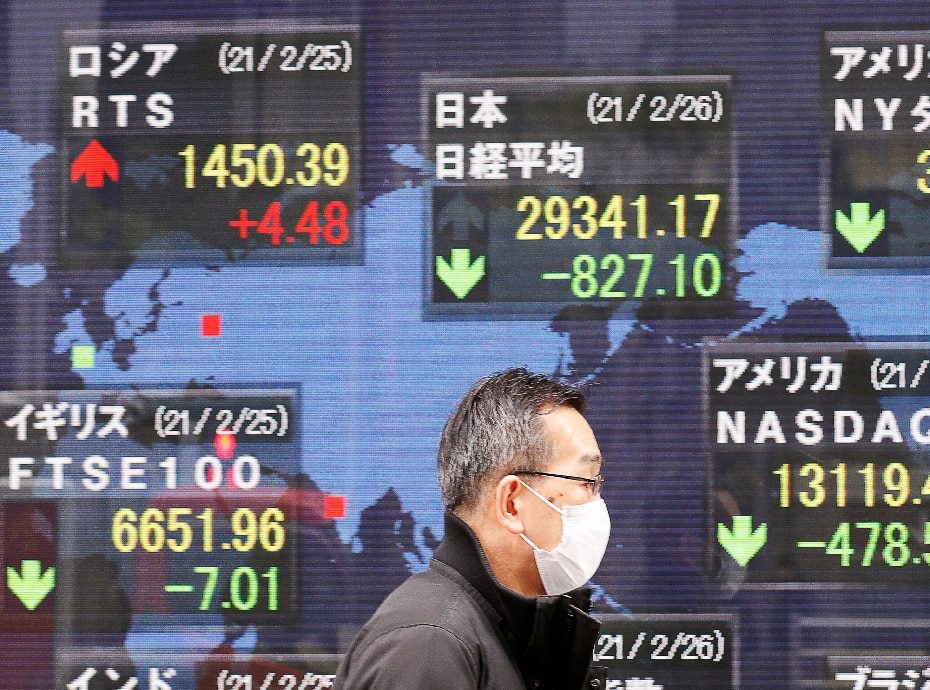Asian stock market fall today-A strong US economy raised concerns that the Federal Reserve could raise interest rates again and Asian stocks lowered on Monday.
Hong Kong’s main stock index fell 2.4%.
Waterfalls were also seen in Shanghai, Tokyo, and Sydney. Oil prices fell.
Wall Street’s benchmark, the S&P 500, fell 0.1% on Friday after government data showed inflation soaring in July. Previous data showed that consumer prices also rose faster in July.
“It’s hard to ignore the drop in positive expectations,” Tan Boon Heng of Mizuho Bank said in a report. Information is needed to give the Fed reasons for not raising rates.
Impact on Asian stock market today.
Shanghai Composite fell 1% to 3,156.89, while Tokyo’s Nikkei 225 fell 1.3% to 32,064.
14. Hong Kong’s Hang Seng Index fell to 18,616.11.
South Korea’s Kospi fell 1% to 2,565.43, while Sydney’s S&P-ASX 200 fell 1% to 7,270.
60.
India’s Sensex Index opened at 64,998.39, down 0.5 percent. Businesses in New Zealand and Southeast Asia also declined.
On Wall Street, the S&P 500 fell to 4,464.05 on Friday after the Bureau of Labor Statistics manufacturing index rose 0.8% from a year ago from 0.2% in June. The index fell to 0.
It lost 3% weekly, for the second week in a row.
Nasdaq Composite was down 0.7% to 13,644.85. The Dow Jones Industrial Average rose 0.
3% to 35,281.40%.
Price data contradicted investors’ expectations that the Federal Reserve decided after a year of rapid increases to cool the economy, where inflation was managed and did not need to raise costs.
Most Wall Street traders are still betting that the government won’t change earnings at the central bank’s September meeting, according to the CME Group. This optimism helped the S&P 500 rise 19%.
It increased 5% in the first seven months of the year.
Critics warn that Wall Street is quickly forming a consensus that inflation is under control, the economy will be thwarted, and the Fed has successfully raised interest rates.
First, government data shows that US consumer prices have risen to 3 percent.
It fell from 3% in the previous month to 2% in July. That’s lower than last year’s high of 9%, but still above the Fed’s 2% target.
Bond yields rose, and two-year yields rose to 4.89%. The result, close to the Fed’s expectations, was 4.
80% just before release. The 10-year Treasury yield rose to 4.16% from 4.10% late Thursday. It helps determine interest rates for mortgages and other important loans.
Fed officials said the rate decision will depend on employment, inflation, and other data.
Major US retailers will announce quarterly results this week, including Home Depot on Tuesday, Target on Wednesday, and Walmart on Thursday.
Reference in the energy market USA.
U.S. crude oil fell 87 cents to $82.32 a barrel in electronic trading on the New York Mercantile Exchange. The contract rose 37 cents to $83.19 on Friday.
Brent crude, the benchmark for the global oil market, fell 87 cents to $85.94 a barrel in London. Oil prices rose 41 cents to $86.81 a barrel on Friday.
It fell from 144.97 yen to 93 yen on Friday. The euro fell from $1.0951 to $1.0934.
